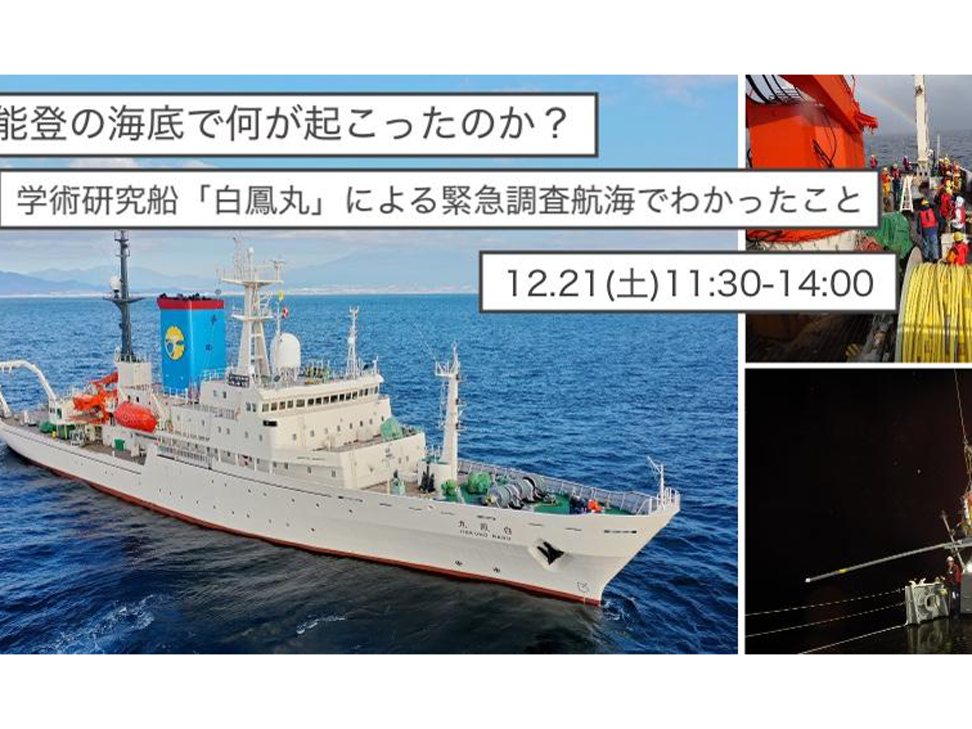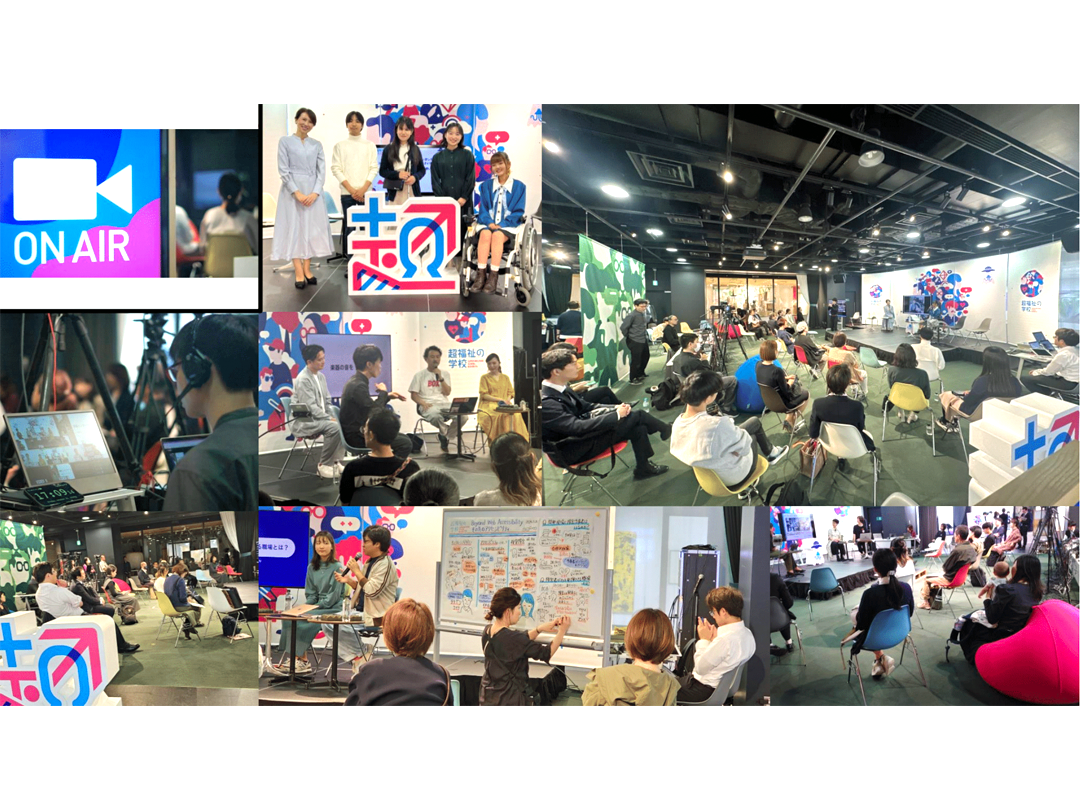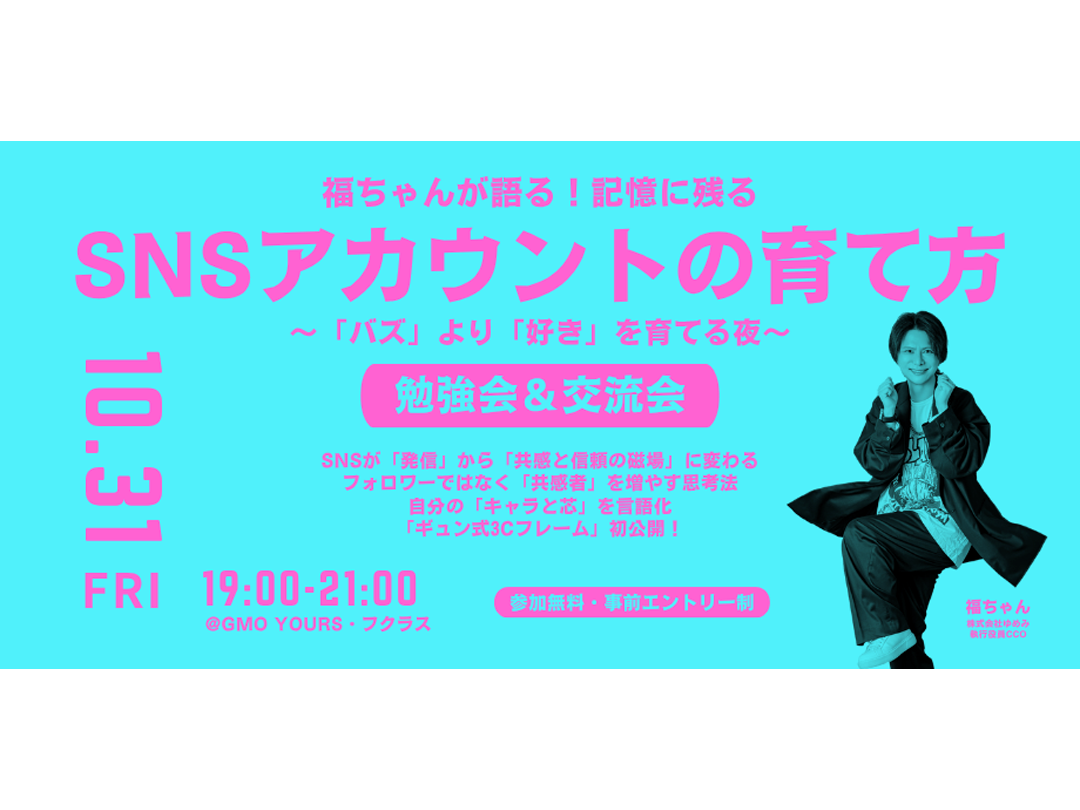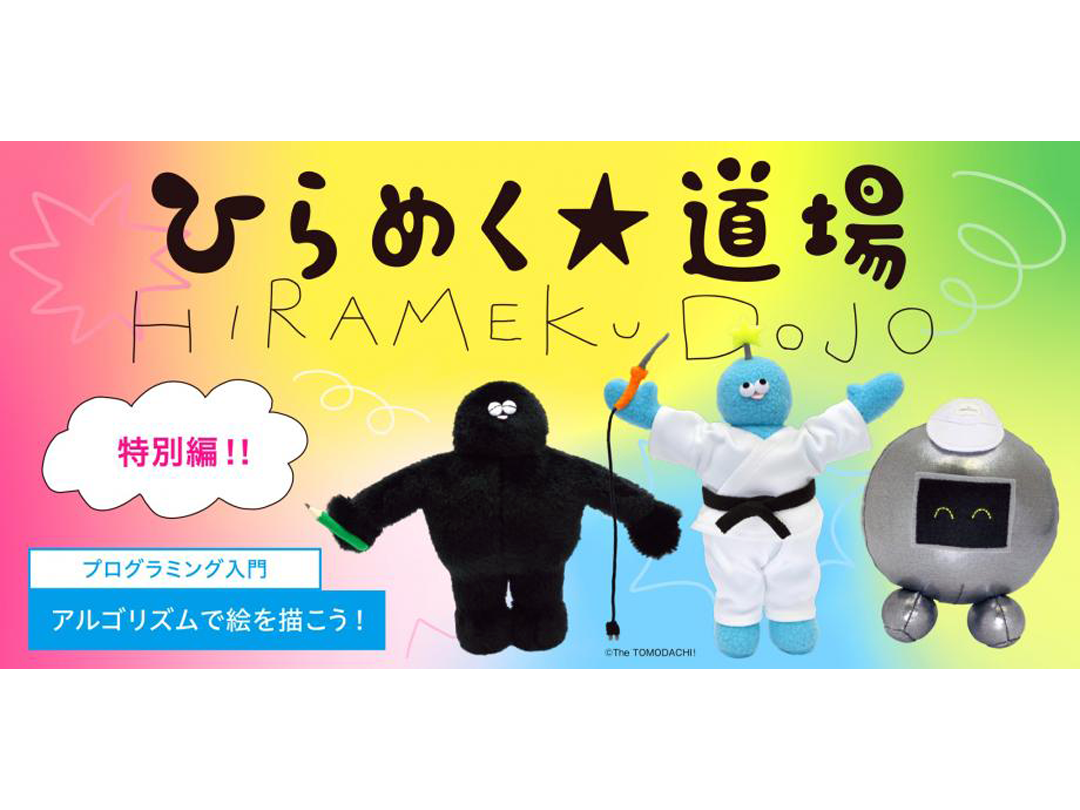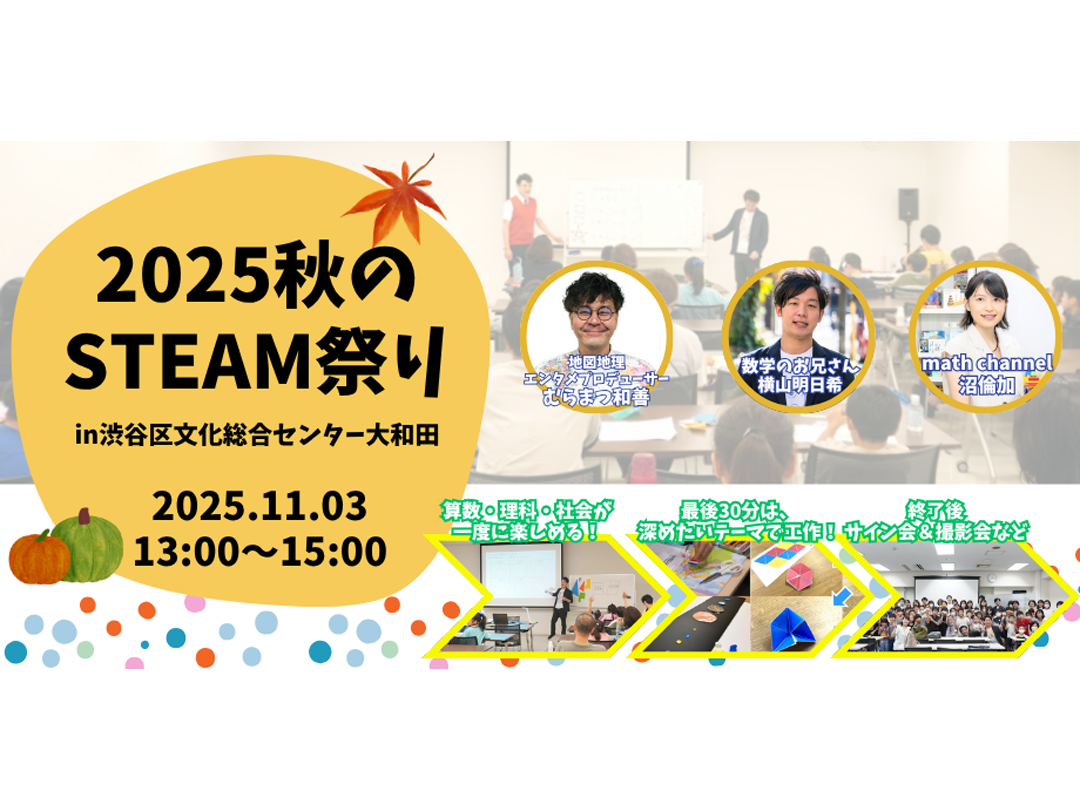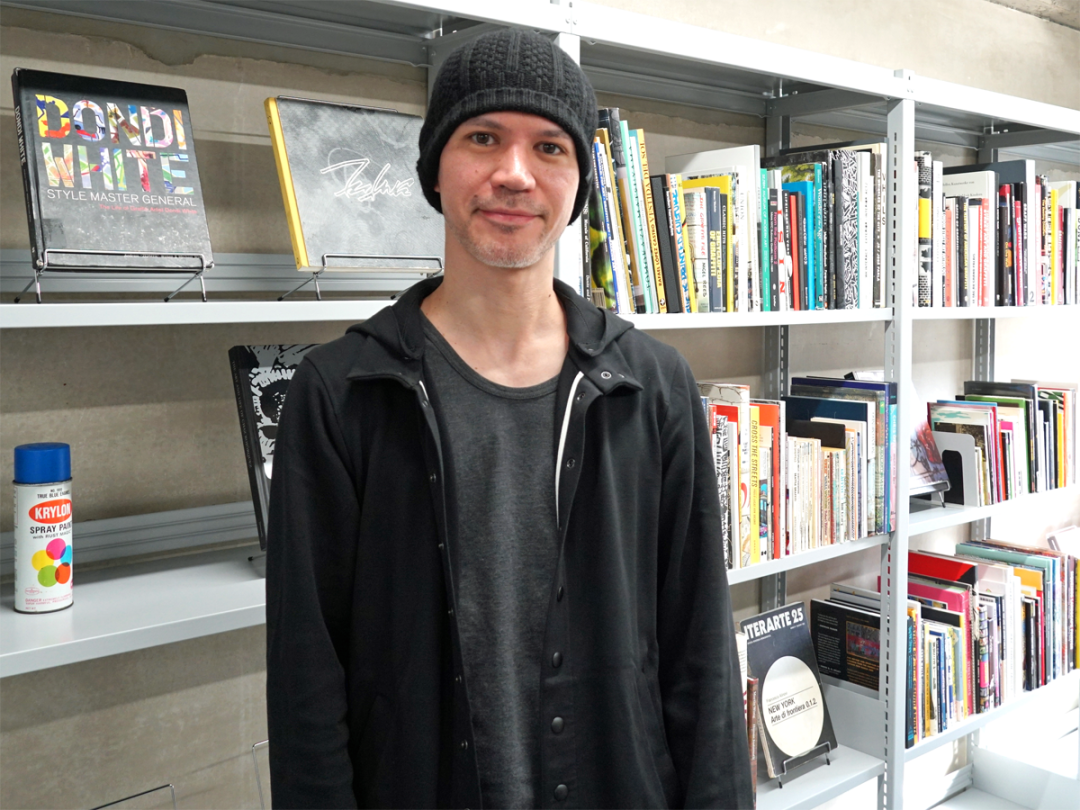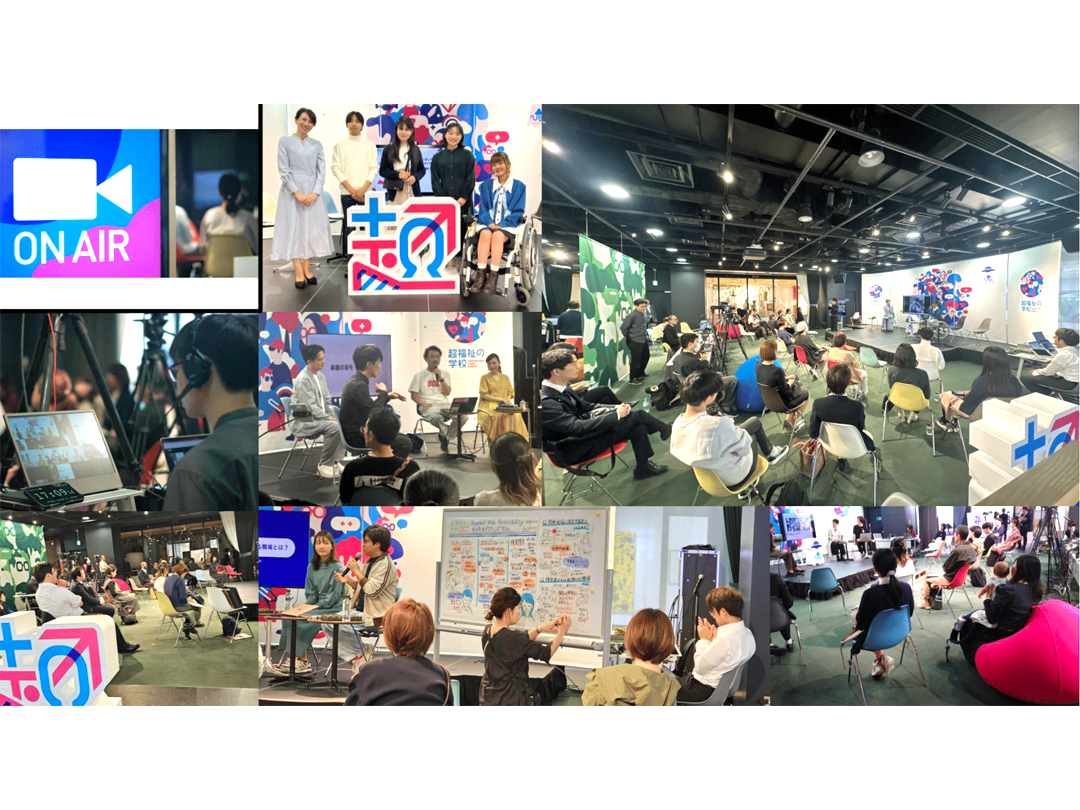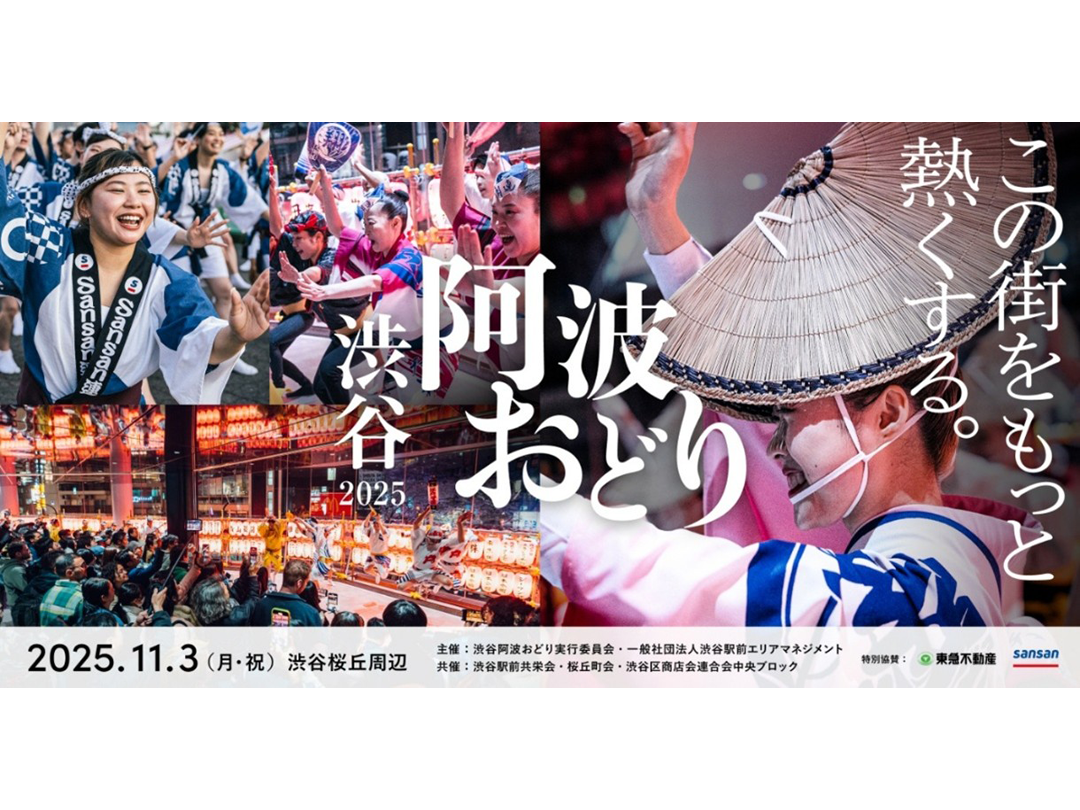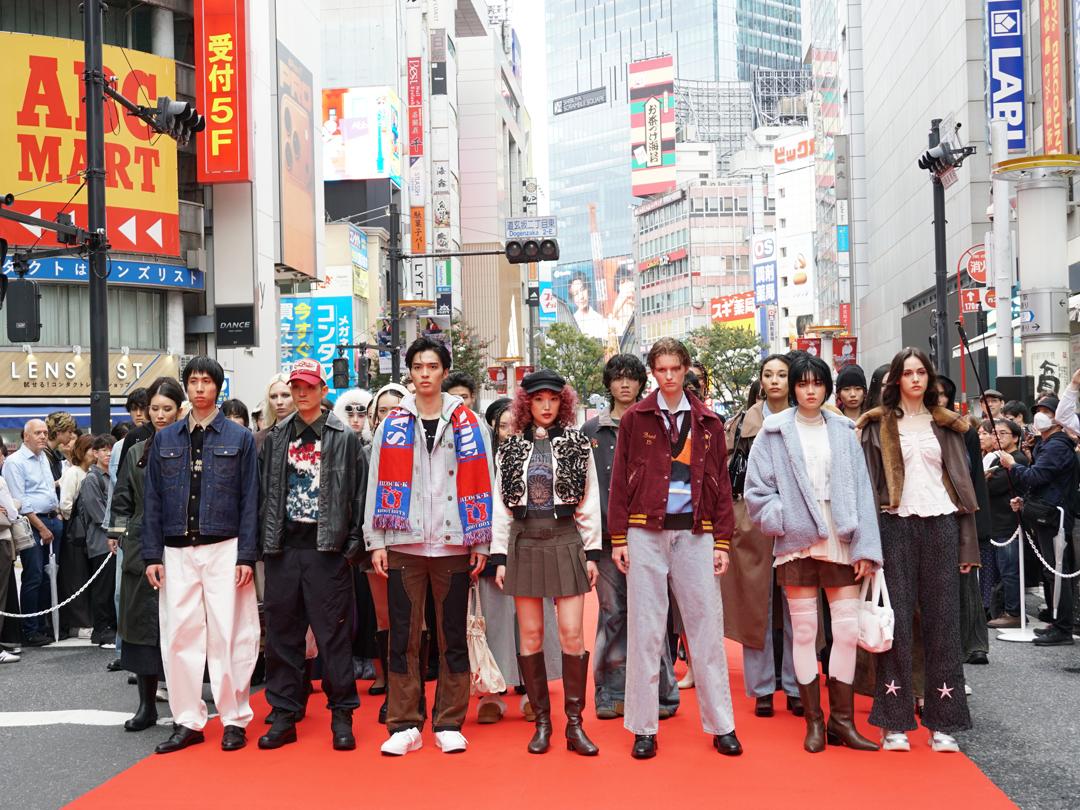SHIBUY.A. × EVENT
2024-12-21
What happened on the seabed of Noto? What was learned from the emergency research voyage of the academic research vessel "Hakuho-Maru" (QWS Academia Special, University of Tokyo)
A program to encounter "unknown questions" in collaboration with universities
2024-11-25
Source: Peatix
[SHIBUYA QWS original program "QWS ACADEMIA"]
This is a program in collaboration with universities that allows students to encounter "unknown questions." At universities, there are students and researchers who are facing a wide variety of "questions." "QWS ACADEMIA" is not just a class where knowledge is transmitted, but aims to stimulate each other in both directions and create a chemical reaction.
[Objective of the event]
The first emergency survey cruise was conducted in January 2024 immediately after the main earthquake, and the second in February to identify the source fault of the earthquake and investigate the mechanism of the earthquake and tsunami. The third emergency survey cruise, which followed in March, investigated the rise of deep fluids related to the earthquake to understand the potential for future earthquakes and to investigate the impact of earthquakes and tsunamis on the marine environment.
Following the emergency research cruise, analysis of the survey results has been progressing, and now, with one year remaining since the main earthquake, the researchers themselves will report the latest analysis results.
During the panel discussion, researchers who participated in the survey will talk about the "2024 Noto Peninsula Earthquake" and discuss the issues they are currently working on, deepening their understanding together with participants.
【Overview】
・Date and time: December 21, 2024 11:30-14:00 (doors open 11:00)
Participation fee: Free
・Application:https://qws-academia-241221.peatix.com
・Venue: SHIBUYA SCRAMBLE SQUARE 15th floor SCRAMBLE HALL
・Organizers: SHIBUYA QWS Innovation Council / Atmosphere and Ocean Research Institute, The University of Tokyo
Co-organized by: Japan Agency for Marine-Earth Science and Technology
【program】
11:00-11:30 | Opening, viewing the poster exhibition
・11:30-11:45|Opening remarks
Susumu Hyodo, Director, Atmosphere and Ocean Research Institute, The University of Tokyo
11:45-12:15 | First and second emergency survey voyage reports
Koichiro Obana, Deputy Director, Marine Seismology and Volcanology Division (Seismogenic Research Center), Japan Agency for Marine-Earth Science and Technology
Masanao Shinohara Professor, Earthquake Research Institute, University of Tokyo
・12:15-12:45|Report on the Third Emergency Research Voyage
Jin-Oh Park, Associate Professor, Department of Ocean Floor Science, Atmosphere and Ocean Research Institute, The University of Tokyo
Asuka Yamaguchi, Associate Professor, Department of Ocean Floor Sciences, Atmosphere and Ocean Research Institute, The University of Tokyo
Takuya Sagawa Associate Professor, Department of Geosciences, Institute of Science and Engineering, Kanazawa University
12:45-13:15|Poster exhibition viewing, coffee break
13:15-14:00 | Panel discussion: What we learned and what we still don't know from the emergency research voyage of the academic research vessel "Hakuho-Maru" - Impacts on the marine environment and marine ecosystems -
Koichiro Ohana, Masanao Shinohara, Takuya Sagawa, Jin-oh Park, Asuka Yamaguchi, Shogo Kagoshima (Specially Appointed Assistant Professor, Department of Science, Academic Research, University of Toyama)
Moderator: Goko Okino, Professor, Atmosphere and Ocean Research Institute, The University of Tokyo
・14:00|Closing remarks
Shuichi Kodaira, Executive Director, Japan Agency for Marine-Earth Science and Technology
【Speakers】
Koichiro Obana, Deputy Director, Marine Seismology and Volcanology Division (Seismogenic Research Center), Japan Agency for Marine-Earth Science and Technology
Born in Kanagawa Prefecture. Graduated from the Graduate School of Science, Kyoto University, with a PhD in Earth and Planetary Sciences. Specializes in marine seismology. Participates in domestic and international research voyages, and conducts research into seismic activity and crustal structure using ocean bottom seismometers.
Masanao Shinohara Professor, Earthquake Research Institute, University of Tokyo
Graduated from the Faculty of Science, Kyushu University in 1986. Completed the Graduate School of Natural Science and Technology, Chiba University in 1991. Doctor of Philosophy. Served as an assistant at the Ocean Research Institute, University of Tokyo, an associate professor at the Faculty of Science, Chiba University, and an associate professor and associate professor at the Earthquake Research Institute, University of Tokyo, before becoming a professor at the Earthquake Research Institute, University of Tokyo in 2010. His specialties are ocean-floor observation seismology and the development of ocean-floor observation equipment. He is conducting research into seismic activity and underground structures through the development of self-floating ocean-floor seismometers and undersea cable-type earthquake and tsunami observation systems, and through observations using these systems.
Jin-Oh Park, Associate Professor, Department of Ocean Floor Science, Atmosphere and Ocean Research Institute, The University of Tokyo
His field of expertise is marine geology and geophysics. His research keywords are earthquakes, tsunamis, crustal structure, offshore active faults, and reflection surveys. Using multi-channel reflection seismic survey data and deep-sea drilling data, he is conducting research focusing on elucidating the structure and physical properties of earthquake source faults that cause giant tsunamis.
Asuka Yamaguchi, Associate Professor, Department of Ocean Floor Sciences, Atmosphere and Ocean Research Institute, The University of Tokyo
He specializes in marine geology and structural geology. His experience of the Great Hanshin earthquake in 1995 led him to study geology. In addition to geological surveys on land, he is also involved in marine surveys of plate boundaries, and was aboard the deep-sea drilling vessel Chikyu in the Japan Trench until December 20th, the day before this event. During the Hakuho Maru's emergency voyage to the Noto Peninsula, he was in charge of collecting mud samples and observing faults using an underwater drone.
Takuya Sagawa Associate Professor, Department of Geosciences, Institute of Science and Engineering, Kanazawa University
Completed his doctoral studies at Hokkaido University Graduate School of Environmental Science, Department of Geosphere Science. PhD (Environmental Science). After postdoctoral studies at Kochi University, Ehime University, and Kyushu University, he became an assistant professor at Kanazawa University in June 2015, and an associate professor in 2023. His specialty is paleoclimatology and paleoceanography. He uses microfossils to read records of past climate changes left in seafloor sediments.
Shogo Kagoshima, Special Assistant Professor, Department of Science, Academic Research Division, University of Toyama
He specializes in geochemistry and is primarily involved in investigating the mechanisms of material circulation and volcanic and earthquake activity by analyzing the concentrations and isotope ratios of elements contained in gas and water samples emitted from volcanoes and faults. In recent years, he has been investigating the relationship between chemical components emitted from underground and earthquake activity through surveys of groundwater and nearby seas on the Noto Peninsula.
Goko Okino, Professor, Department of Ocean Floor Sciences, Atmosphere and Ocean Research Institute, The University of Tokyo
After completing his master's course at the Kyoto University Graduate School of Science, he worked for the Hydrographic Department (now the Marine Information Department) of the Japan Coast Guard before joining the Ocean Research Institute at the University of Tokyo (now the Atmosphere and Ocean Research Institute). He has a PhD in Science and specializes in ocean floor geophysics and tectonics. He uses research vessels and deep-sea exploration vehicles to observe topography, geomagnetism, gravity, etc., and is primarily researching ridge systems where new ocean floor is born. His publications include "Marine Floor Geoscience" (University of Tokyo Press).
【ABOUT SHIBUYA QWS】
SHIBUYA SCRAMBLE SQUARE opened on November 1, 2019, directly connected to and above Shibuya Station. SHIBUYA QWS (hereinafter QWS) is a members-only facility located on the 15th floor. With the concept of "Not just asking, not just meeting, not just creating, but changing the world," the facility aims to create a movement that leads to unknown value by intersecting the [questions] of players with diverse backgrounds.
https://shibuya-qws.com/
[Regarding the content of your responses that includes personal information]
The personal information you provide will be managed in accordance with SHIBUYA SCRAMBLE SQUARE, Ltd.'s personal information management regulations, and will be disposed of in an appropriate manner after use.https://shibuya-qws.com/privacy-policy
[About the information listed for this event]
Information regarding speakers and the program will be updated as changes or additional decisions are made.
To apply to participate in the event
Thank you from here.
